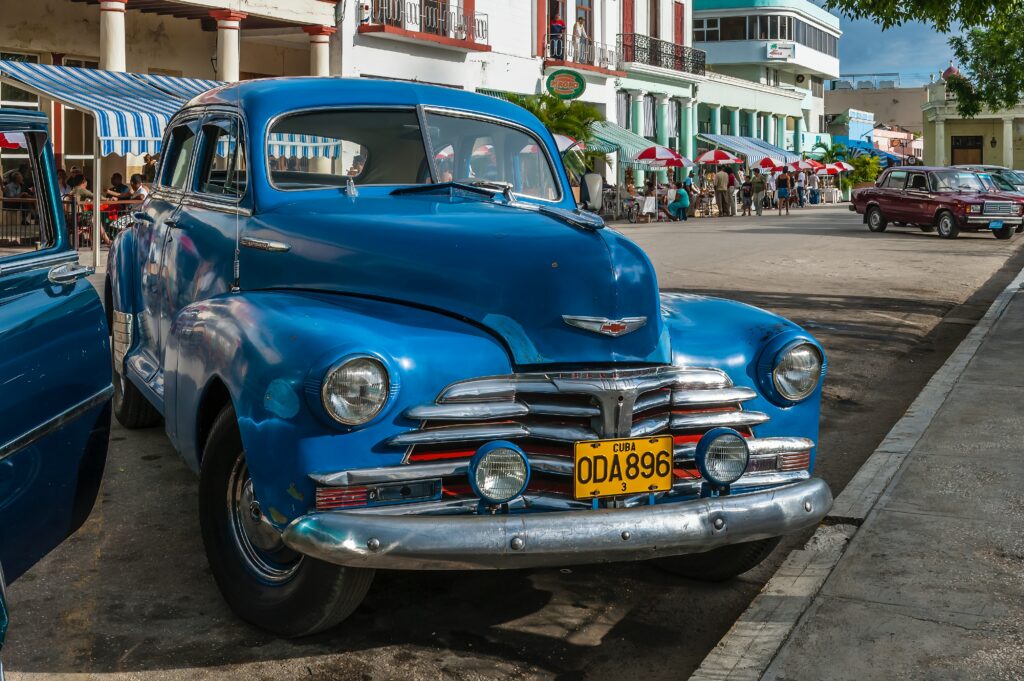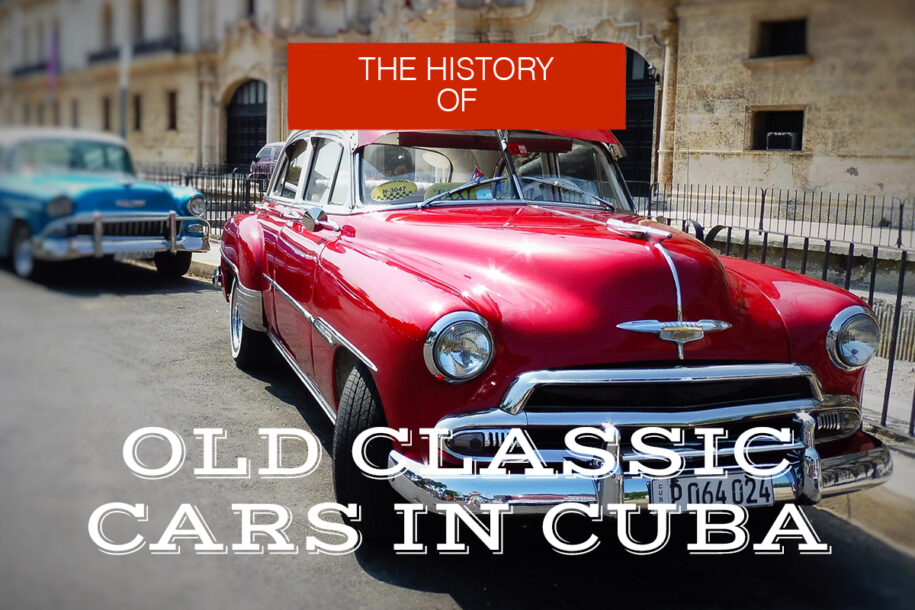Why are there so many classic cars in Cuba? It’s an interesting history and one that is very much linked to the history of Cuba itself. To the visitor it might be like “Wow, look at all these classic cars.” But to the locals they are merely cars, a way of getting around.
And although these old cars have a fuel efficiency that is probably comparable to a tank and weaken the ozone wherever they go, for some Cubans it’s the only way to get around on the island.

The History Behind Why Does Cuba Have So Many Old Cars
In a nutshell, there were a lot of trade restrictions imposed upon Cuba after the revolution. Cuba is not exactly isolated in terms of its geography, and the coast of Florida is only 178 km (110 miles) away. But no new cars were being imported into Cuba from the US, and the rest of the countries that actually produce cars are rather far away. It just really wasn’t cost-effective to import all that many new cars from anywhere else.
Sure, there were some countries that sent Cuba a few cars, but it really was a few – nowhere near enough to change the fact that those glorious old cars are in fact the norm (but hey, what a sensationally beautiful norm it is!). And so when asking why does Cuba have so many old cars, you have to be aware that they didn’t really have any other choice.
The Other “Old” Cars
And yet not everything on the road in Cuba is a museum on wheels. While it became impossible to bring cars across from the US (and the cost of import along with various other restrictions meant that it was not possible to bring vehicles from Europe), there were still a few other types of cars that made their way to Cuba. You will see that a number of official vehicles (such as those used by the government or law enforcement) tend to be Russian Ladas and Chinese brands, often made by manufacturers that even a motoring enthusiast will not have heard of.
These “new” vehicles might seem like a wave of modernity when you’ve been wandering around and wondering why does Cuba have so many old cars, but remember that these other rather unremarkable “new” vehicles are the exception, and not the rule. They can also perhaps be considered as old and classic… in a way. Some of them are technically Soviet-era cars after all!
Under the Hood
The question of why does Cuba have so many old cars becomes slightly more difficult when you happen to look under the hood. Many of these vehicles become less vintage when you see what is actually powering them. Despite exhaustive and comprehensive maintenance parts of the car simply don’t last, and this is maybe not all that surprising when you think that they’ve been on the road for well over half a century, with a wide array of replacement parts not exactly easy to come by.
The engines of these amazing old cars can often be a Frankenstein’s monster mashup of original parts, parts taken from other vehicles that have gone to classic car heaven, and even newer parts that have been begged and bartered from a variety of sources. It’s only through sheer ingenuity that these engines work, and yet work they do. And that’s just part of the fascinating history of Cuban car culture.
The Economics
Cuba is obviously not a wealthy country and so any way of reducing your operating costs when owning a car can make a huge difference. Petrol (or gas, or fuel, or whatever you prefer) costs around $1.20 per litre (when converted to US dollars). Diesel costs a little under half of this. So when there’s an option to get double the fuel for the same amount of money, clearly many people are going to go for it.
This means that there is a steady trade for mechanics to remove those old Frankenstein’s monster mashup engines altogether and replace it with an engine that runs on diesel. These diesel engines might be mashups themselves, or they might have been lifted from other vehicles that have come to the ends of their lives… kind of like a human organ donor. In financial terms this is a good thing, but not so much in environmental terms as the exhaust from these diesel beasts can be problematic.
The Future
When wondering why does Cuba have so many old cars, you might also begin to wonder if it will always be this way. After all, the US and Cuba are (sort of) buddies again, and so perhaps this ease in restrictions will mean the end of the road for Cuba’s classic cars. Well, the answer is… maybe. The Cuban government in fact ended an import restriction on new vehicles back in 2013, but this hasn’t made a huge amount of difference. While it’s possible to import a new car, the cost means that this isn’t an option for the vast majority of people. In coming decades, as more new cars are brought to the island, become used and are then resold at a lower price, the number of classic cars in Cuba will presumably begin to decline.
But this will undoubtedly be a slow process. These four-wheeled beauties have been prowling the roads of Cuba for more than half a century now and will likely continue to do so for another half century… if not longer.
